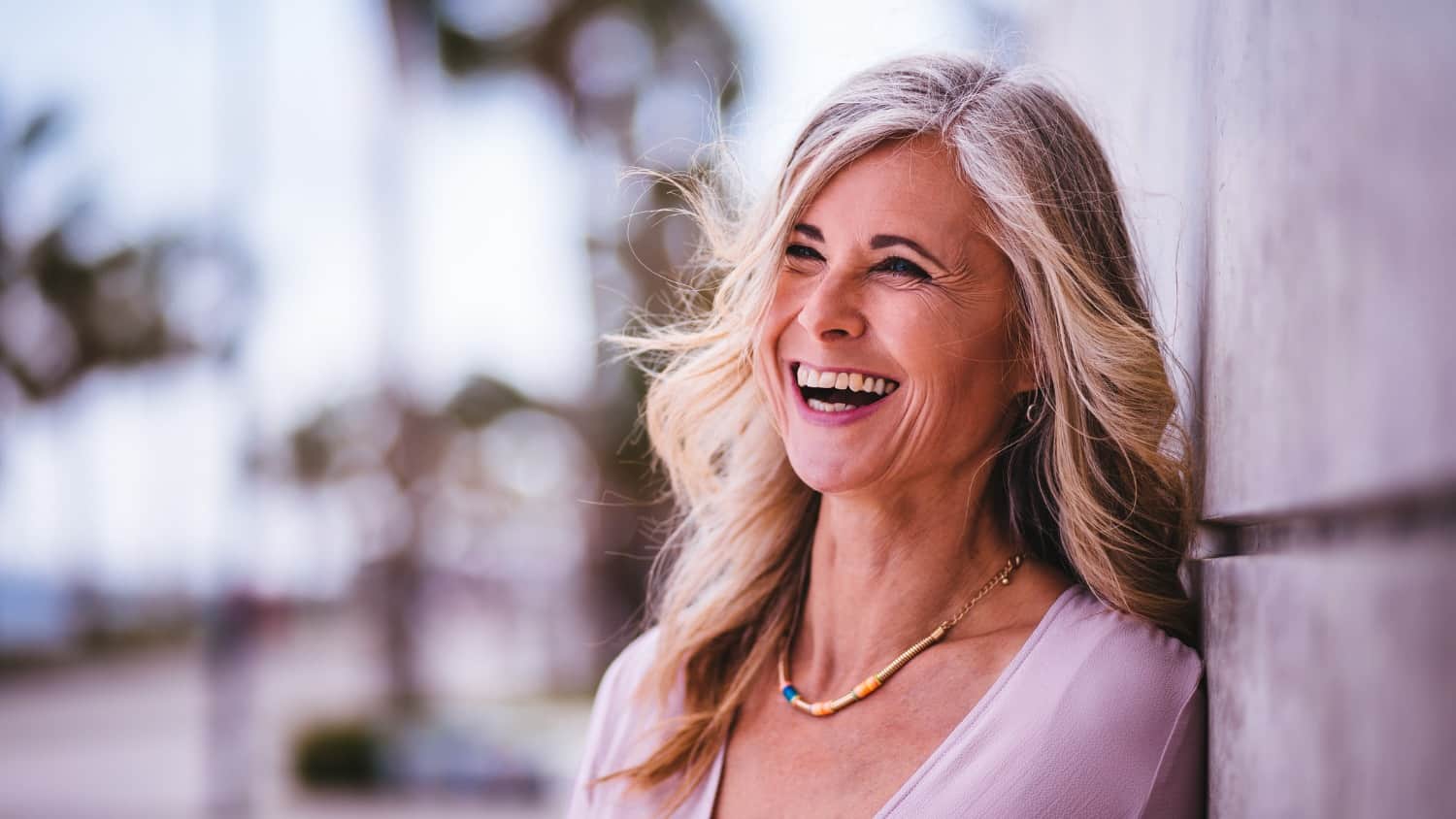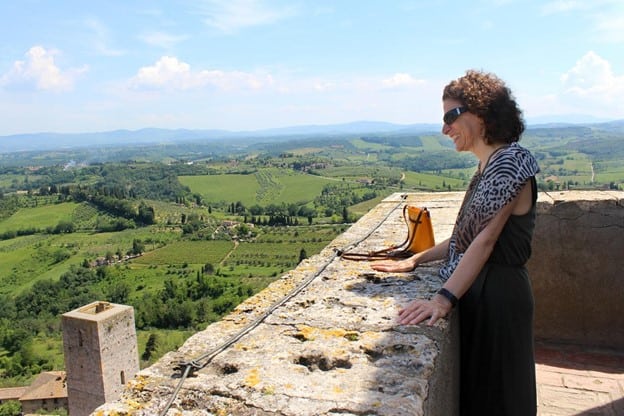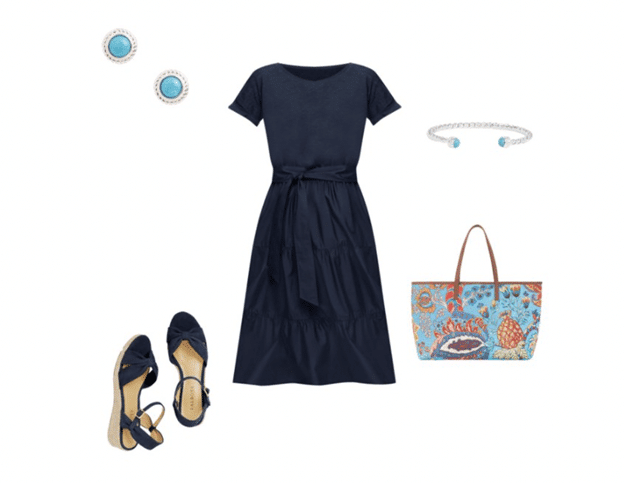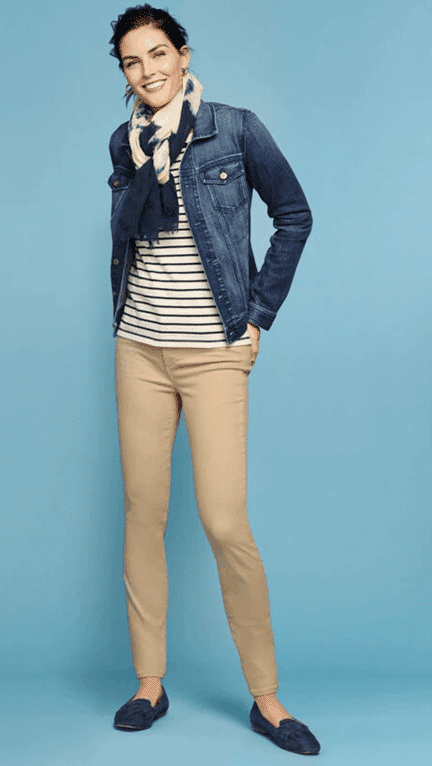[ad_1]
Whenever I travel, I am always amazed by the diverse ways that my sisters express their style around the world. The women in every single country – from the U.S. and Canada to Italy and France and everywhere in-between – have something special to share!
The world is full of beautiful women who know their bodies and how to dress them. But how is it that so many women in Italy and France lead the world in class and style?
Read 10 Fashion Forward Destinations – Exploring Cities Known for Their Style and Shopping Scenes.

Invest in Your Wardrobe
Not all garments are created equal. One thing the women of cities like Paris and Milan know is that quality is much more important than quantity. It is better to have one perfectly tailored jacket that elongates your frame than it is to have a dozen ill-fitting jackets that make your look boxy or stout.
Investing in staple pieces such as properly fitted blazers, skirts, and trousers lays the foundation for building a wardrobe that is distinctively and uniquely your own personal style. The quality of these pieces comes from the materials they are made of and the value of their stitching and seams. It’s important to buy garments that will last a long time until you’ve become bored with them.
Personalize Your Style with Accessories
A black pant suit with black pumps, pearl earrings, and a pearl choker may look modest and reserved. However, the same black pant suit with red heels and a matching red brooch may come across as classy and elegant. And the aforementioned pant suit paired with a floral scarf and a kelly green handbag may look fresh and fun. Accessories are the key to showing your own personal style.

Learn How to Dress Your Body Type
Fashion changes but style does not. Heavier women can look just as polished as petite women if they wear the right shapes. Flimsy material and bulky garments will make a portly person appear larger and a three-quarter jacket that comes down mid-thigh on an average height person will make a shorter person look even smaller if it comes down to their knees.
The key is knowing your shape and size and finding pieces that accentuate the positive and camouflage the negative. One rule our blogger Penelope Whiteley loves is “fitting is fabulous and tight is tacky.” Sticking with solid colors instead of choosing “ditsy prints” is another great way that women over 50 can look smart and confident in the clothes they wear.
Read more: Less Is More! 4 Reasons Most Older Women Need a Fashion Formula.
Choose Clothes that Communicate Who You Are
It’s true that your clothing speaks volumes to others about who you are. What we wear reflects who we are on the inside and others make judgments about us regarding what they see.
So, if societal and cultural norms don’t matter to you, you may choose to have more fun and wear whatever is comfortable or whatever makes you happy. Yet, if you’re wanting to let people know that you are an intelligent person with much to offer the world, you may want to dress in a way that shows your confidence and class.
More Great Fashion Tips for Women Over 60 – Straight from Paris!
My friend and fashion after 60 expert Judith Boyd has some unexpected fashion tips to share! If you have been following Judith for a while, you know that she is fabulously eccentric and fun to watch. She also knows her stuff and isn’t afraid to tell the truth about style and fashion for women over 60.
There’s a Word for It

Sprezzatura translates to artful nonchalance. That pretty much describes the essence of women’s fashion style in Italy and in France.
Their clothing is an artful expression of who they are. It symbolizes the amount of attention and care that they put into what they wear, and it also gives them the ability to shrug off the suggestion that they care too much.

Simplicity Reigns
Italian styles are typically quite simple. You won’t find a lot of frills or ruffles, except in the high fashion designer ads and runways. Although they wear mostly neutral colors, Italian women love colorful handbags and are sometimes quite flashy in their accessories: colorful, large jewelry – chains and large pendants. They also like brightly patterned scarves tied to the handles of their bags or other places to add a pop of color to their outfits.

Being in a warmer climate and more laid-back culture, you can’t go wrong here with comfortable flats (sandals and loafers) instead of high heels and boots. Italians are known for their quality shoes!
The fabrics worn by Italian women are light in weight with loose fits – jersey linen or cotton pants, flowing skirts and dresses, and tunic tops worn with or without a belt.

Bonjour Paris!
As with the Italians, the color palette for most French women is also mostly neutral, and they only occasionally give a nod to trends.
French women have a more classic look. They opt for quality fabrics, high couture or at least couture-looking separates and they add the occasional pop of color.
For an easy way to ‘go native’, tuck a simple solid-color silk or cotton blouse into a smart pair of slacks or jeans and finish with a leather or jeans jacket or coat. For cooler weather, just replace the blouse with a cashmere sweater.
You can wear flats and loafers, but they must be well made and can be a little trendy. If you still wear heels, this is the place to do it, although walking on the sidewalks of Paris in heels might be a bit tricky or even dangerous.
And then there are the scarves. French women tie them so artfully! Simply add a scarf to your basic sweater or wear one over your jean jacket or leather jacket to complete your Parisian look. Voilà!

A lot has been said about style and women in Italy and France. Do you think there is something about style we can learn from them? Fashion expert Penelope Whiteley has some insights to share. Enjoy the conversation!
Margaret Manning:
Penelope is a speaker and an author of several books. She has traveled around the world and visited 57 countries, and has lived in seven of them.
Her mission in life is helping older women to reinvent themselves and to get unstuck from the challenges they face as they make the transition into their 60s. Welcome, Penelope.
Penelope Whiteley:
Thank you, Margaret. It’s great to be here.
Margaret:
You actively blog for us at Sixty and Me, and our large group of women love your articles about fashion and reinventing our new look as we get a little older. That’s the topic I’d like to discuss today.
How can you get that exotic, fresh look that women in places like France and Italy obtain? How do they do it? Tell us more about fashion in those two places that I know you love and you travel to all the time.
Penelope:
I do love both France and Italy, and I do love shopping there. I also love the way many women dress there. Much of their style comes from the fact that they don’t necessarily buy cheap Chinese clothing when they go shopping.
For them, buying clothes is an investment. They will invest in a blazer. They’ll invest in a skirt and a pair of pants. Their purchases may not constitute high fashion, but it’s much better to create your own style. It’s wise not to follow fashion because fashion, particularly nowadays, is designed for the 18- to 25-year-old group.
Margaret:
Does that mean that they look for materials that may not be expensive, but natural, like cotton, silk or linen? Those are the types of materials that are great for more than one or two wears.
Penelope:
Yes. They wear clothes that will last 10 years or longer. Eventually, they would just get tired of them, and give them to a local odd shop or to someone who has seen the garment before and said, “Oh I love that!” They could even say, “Please, take it with my blessing!”
Quality of material is very important. When you go shopping, examine the garments you buy. Look at how they are made. Look at the stitching, French seams, anything that will give you a garment of value that will last until you finally become bored with it.
They dress well and they accessorize.
Margaret:
Please tell us more about accessories. This is a favorite topic at Sixty and Me as a lot of our women often comment on necklaces or bracelets that they are wearing; even scarves. I think accessorizing is a real skill we can learn from our European sisters.
Penelope:
Most European women are particularly good with scarves. I love scarves and own more scarves than I have clothes. Many European women are the same way, though there are also those who only own one handmade scarf and that’s it. I guess they figure that’s all they really need.
When it comes to earrings, drop earrings don’t necessarily suit as you get older. You are better off with something smaller, that does not hang under the ear. I believe jewelry gives you a brightness that you don’t always have, so it’s no surprise that I am a great fan of bling.
Now, this is personal, but I am not a huge fan of necklaces. I’d rather wear a single strand of pearls, which is very Parisian and very Italian. Chokers of pearls are very difficult to wear as you get older because you might get a turkey crop, and that definitely doesn’t look great.
I love brooches and think they are sensational. In Italy, in particular, you can buy the most beautiful brooches in leather; they are just lovely.
Margaret:
Brooches are wonderful. You can even put them in hats, if you wear berets. I actually have a sweater that is very thin, and sometimes, I would just bring a part of it over, and pin it asymmetrically. You can do a lot with brooches.
Penelope:
Absolutely, brooches are amazing. If you are wearing a particularly boring garment, put on some pearls—a necklace and earrings—and if it has a long hem, stick in a huge red brooch. If you tie it in with red shoes, you will successfully bleed the color, even without a matching bag or scarf.
I think most of the stylish women in Europe seem to be unlikely to have a weight problem. They might be a little larger than when they were 18, but who isn’t?
Their secret comes with understanding their new body shape. They understand their new face shape. They can’t necessarily wear the same shape of glasses they wore 15 years ago.
Certainly, with clothing, they understand that layering can do wonders. For women who are a little thicker around the waist—and that happens even to the thinnest people once they are a certain age—you can visually slim that down just with long jewelry, open jackets and specific colors.
Stick with solid colors. One of my rules is that women over 50 should never wear ditsy prints, because they just don’t work.
Margaret:
That’s another thing that I’ve noticed in my travels to Paris and Italy. Women tend to wear a single color, or their clothes are toned. For instance, they will choose a basic color like black, navy or maybe beige or khaki or some other tone, and work around that. All-black also seems really common, do you agree?
Penelope:
Yes, I do. In fact, it’s my favorite color combination. Finding color in my wardrobe is almost impossible. People say you can’t wear all black, but of course, all black is so stylish. So, it comes down to knowing your body shape and knowing what suits you and what doesn’t.
If you’re around five feet in height, the current fashion of three-quarter jackets wouldn’t work for you. They come halfway down the thigh on an average height person but are going to be too long if you’re shorter.
Margaret:
Sixty and Me has been around for four years now. In our first or second year we went down to Milan and interviewed a woman, Melanie Page, who is a fashion stylist. She took us around Milan, and we talked about clothes.
One thing she said is that you should always have a set of clothes – a top, pants, a skirt and a jacket – four things that are in the same color and complement your body. For instance, a straight jacket isn’t right for everyone; some people may need darts in the back.
Penelope:
Yes, style rules never change. Fashion changes, but style doesn’t. Even on a portly person, a fitting jacket – not tight, but a fitting – is better than a big bulky jacket. One of my rules is, fitting is fabulous and tight is tacky.
Margaret:
That goes for the texture of the material, too. Flimsy material that is tight will not result in a good look. As you said, it’s important to use texture, color and body shape to compensate for a heavy top or a heavy bottom.
Penelope:
Yes. Basically, it’s learning the subtle art of camouflage without having to wear fatigues. There are all sorts of style rules, in my book anyway. For instance, you never wear a black bra under a white top, which you see commonly nowadays.
You don’t wear white knickers under white pants – you wear flesh colored knickers. It sounds silly, but it actually creates a style. These rules are a statement which says, “I know not to do these things.”
Margaret:
Style rules are great, but I know that women in the community will say things like, “Who cares if I wear a white bra or a flesh colored bra? I’m 60 years old, I will do what I want and what makes me feel comfortable.”
There is no judgement here – I know that is the way some people like to dress. But since we’re discussing the French and Italian style, perhaps we should be prepared to follow some of the styling rules that go with it. And you can always accessorize and be as bohemian and creative as you want around those basic rules.
Penelope:
Absolutely. As you said, not everybody wants to wear flesh colored knickers under their white pants. Naturally, it becomes a question of personal choice.
Do you want to create your own personal style? If you don’t, then that’s entirely your choice. It has nothing to do with fashion; this is about your own personal style, whether it’s bohemian or goth or something else.
You create the style that works for your body so that when you look in the mirror, you say, “Yes, I’m pleased with myself.” If you look good, it automatically raises your self-esteem, your self-confidence and your mood. And you put some good energy back into the planet.
Margaret:
I think it’s true that your clothing speaks for you. It does reflect who you are on the inside. If you are trying to communicate who you are to the world, your clothing is a great vehicle for that purpose.
Penelope:
Yes, you can only make one first impression, and 55% of that first impression is based on your appearance. I know people may say that’s shallow, and it probably is, but it’s also fact. The words that you say only represent seven percent of that first impression.
Margaret:
We know a lot of women are gaining a little weight as they get older. Sometimes we want to wear outfits that we loved wearing in our 30s, but of course, they don’t suit our body shape anymore. In one of your four books – or was it an online course? – you talk about losing 20 pounds in 20 minutes. What is that all about?
Penelope:
One of the first books I wrote, specifically for women over 50, was called Hot Stuff: The Ultimate Guide to Style for Women of a Certain Age. It contains everything you could ever want to know. It even covers things like relaxation, breathing, hormone replacement, menopause and styles for different bodies.
Also, I just completed a program I would be running online called Lose Twenty Pounds in Twenty Minutes. Which, of course, you can by changing the way you dress.
Margaret:
So it’s an online course. An abundance of Penelope’s materials is available on her website, where you can also sign up for her newsletter which will deliver lots of information to your inbox on a regular basis. On her website you can also learn how to get a hold of her books and be inspired by them. I think it’s fantastic.
Penelope:
I hope so.
Margaret:
This discussion has been so helpful. Everybody talks about European women as having a lot of style and a lot of presence. I think they do, but I must admit there are women with a really great sense of style in the States too. I think it’s just a different way of approaching fashion rules and style.
Penelope:
Absolutely. Some of the smartest women I have ever seen are in places like New York and Berlin, so it’s not just Italy and France. All over the planet, there are women who know how to look their best and feel comfortable looking their best. You have really got to feel comfortable in your skin and your clothing.
Margaret:
That is the secret to happiness in your 60s, for sure – being at peace and loving your body and yourself. Thank you, Penelope. It’s been great talking with you.
Adapting European Style to Your Life – A Practical Guide
You don’t need to live in Paris or Milan to embrace the chic styles of Italian and French women. The beauty of European fashion lies in its timeless elegance and versatility, making it accessible to anyone, anywhere. Here’s how you can effortlessly incorporate European flair into your wardrobe, regardless of where you live or your budget.
Focus on Quality Over Quantity
Key Pieces: Begin by investing in a few high-quality staples that will serve as the foundation of your wardrobe. A tailored blazer, a classic trench coat, and a well-fitted pair of trousers are all quintessential items that embody European style. These pieces may require a bit more investment upfront, but their durability and timeless appeal ensure they will be wardrobe staples for years to come.
Practical Tip: Look for these key items in neutral colors like black, navy, beige, or gray. These colors are easy to mix and match, allowing you to create multiple outfits with just a few pieces.
Mix High-End with Affordable Basics
Balancing Act: You don’t need an entirely designer wardrobe to achieve a chic European look. The secret is to balance high-end pieces with more affordable basics. For example, pair a designer blazer with a simple white tee and jeans, or mix a luxurious silk scarf with a casual denim jacket.
Practical Tip: Shop for affordable basics at reliable retailers or even thrift stores. Look for items made from natural fabrics like cotton, linen, or wool, as they tend to last longer and look more sophisticated.
Consider Your Climate and Lifestyle
Climate Adaptation: European fashion is versatile enough to adapt to various climates. If you live in a warmer area, opt for lightweight fabrics like linen and cotton that breathe well and keep you comfortable. In colder climates, choose layered outfits, combining cashmere sweaters with wool coats or puffer jackets for warmth without sacrificing style.
Practical Tip: For those in hot climates, Italian-style linen dresses and wide-brimmed hats can keep you cool while looking effortlessly stylish. In colder regions, emulate French style with a chic wool coat, paired with ankle boots and a cozy scarf.
Accessorize with Intention
Personal Flair: Accessories are where you can truly make European style your own. A statement necklace, a pair of elegant leather gloves, or a bold scarf can transform even the simplest outfit into something special. French and Italian women often use accessories to add a pop of color or personality to their look.
Practical Tip: Don’t be afraid to experiment with different accessories. Try tying a scarf in various ways—around your neck, as a belt, or on the handle of your bag. A well-chosen accessory can be a conversation starter and a reflection of your personal style.
Shop Locally and Online
Local Finds: Don’t overlook local boutiques or markets for unique fashion finds. Many small shops offer one-of-a-kind pieces that can add a European touch to your wardrobe. Online shopping opens up a world of possibilities, with many European brands offering international shipping.
Practical Tip: Look for local artisans who create handmade jewelry or bespoke clothing. These pieces often have the same quality and craftsmanship as more expensive European brands but at a fraction of the cost.
Incorporate European Trends Thoughtfully
Stay Updated: While classic pieces are the cornerstone of European style, it’s also fun to incorporate current trends. However, the key is to do so thoughtfully and sparingly. Choose trends that align with your personal style and complement your existing wardrobe rather than overwhelm it.
Practical Tip: If you’re unsure about a trend, start small. For instance, if bold patterns are in vogue, try integrating them through accessories like a scarf or handbag rather than a full outfit.
Build a Capsule Wardrobe
Less is More: A capsule wardrobe, inspired by the minimalist approach often seen in French and Italian fashion, can simplify your life while ensuring you always have something stylish to wear. Focus on versatile pieces that can be mixed and matched easily.
Practical Tip: Start with a base of neutral colors and add in a few statement pieces or seasonal items to keep your wardrobe fresh. This approach not only saves time and money but also aligns with the sustainable fashion movement.
Read The Capsule Wardrobe – A Must Have Every Woman Should Be Utilizing.
Embrace Confidence and Simplicity
Attitude Matters: Ultimately, European style is as much about attitude as it is about clothing. Confidence, simplicity, and a touch of nonchalance—what Italians call “sprezzatura”—are key elements. Wear your clothes with confidence, and don’t overthink your choices. Sometimes, the simplest outfits are the most striking.
Practical Tip: Practice mindful dressing. Before leaving the house, take a moment to assess your outfit. If it feels comfortable and reflects your personal style, you’re ready to go.
Modern European Brands That Cater to Women Over 50
You don’t need to live in Europe to shop like a European. Many modern brands either come from Europe or reflect that same sense of style – simple, elegant, well-constructed pieces that look good on women of every age. Here are a few favorites to explore:
Max Mara – Italy
- Why it works: Known for refined tailoring, neutral palettes, and luxurious fabrics, Max Mara is the epitome of timeless Italian sophistication. Their coats are investment pieces that never go out of style.
- Best for: Long wool coats, trousers, structured blazers, and elegant knits.
- Where to shop: www.maxmara.com
COS – Sweden
- Why it works: With its clean lines and minimalist aesthetic, COS is a go-to for women who love structured simplicity. Many of their pieces are cut generously, making them ideal for layering and flattering a range of body types.
- Best for: Modern basics with a twist – boxy tops, oversized dresses, and elegant everyday separates.
- Where to shop: www.cosstores.com
Sézane – France
- Why it works: Romantic, soft, and easy to wear, Sézane blends French charm with comfort. Their collections include relaxed tailoring, high-quality fabrics, and vintage-inspired prints that still feel modern.
- Best for: Blouses, midi dresses, lightweight sweaters, and thoughtful accessories.
- Where to shop: www.sezane.com
& Other Stories – Sweden (with French and LA ateliers)
- Why it works: While the brand leans trendy, it also includes plenty of timeless staples. Their pieces often echo the polish and understated chic of European fashion houses at more accessible prices.
- Best for: Stylish separates, basics, leather bags, and chic flats.
- Where to shop: www.stories.com
Eileen Fisher – USA (European-inspired)
- Why it works: Though not a European label, Eileen Fisher nails that same effortless elegance. Known for their commitment to sustainability, the brand’s collections are filled with neutral-toned, flowing, breathable clothes designed for comfort and longevity.
- Best for: Linen pants, jersey dresses, organic cotton basics, and layered knits.
- Where to shop: www.eileenfisher.com
Shopping Tip: Focus on fabric and fit over labels. Even one well-made piece from any of these brands – a tailored coat, a silk blouse, or a structured bag – can make you look and feel like a French or Italian women.
Style Icons from Italy and France Over 50 – What We Can Learn from Them
These Italian and French women over 50 have developed signature styles that reflect their personalities and life experience. They’re chic, timeless, and full of inspiration.
Inès de La Fressange (France)
Photo: Instagram
- Who she is: Former model, muse to Karl Lagerfeld, and author of Parisian Chic.
- Style trademarks: Relaxed tailoring, flats instead of heels, classic navy and white combinations, and menswear-inspired touches (think crisp white shirts and blazers).
- Takeaway: Keep your look effortless but polished. A blazer and jeans with loafers is her go-to—and it works at any age.
Carla Bruni (France/Italy)
Photo: Instagram
- Who she is: Singer, former model, and former First Lady of France.
- Style trademarks: Understated glamour, fitted silhouettes, soft fabrics, and a preference for monochrome or muted tones.
- Takeaway: Embrace sleek, tailored pieces in luxurious fabrics. A high-quality cashmere sweater and well-fitted trousers can boost your entire outfit.
Anna Dello Russo (Italy)
Photo: Instagram
- Who she is: Editor-at-large for Vogue Japan and one of fashion week’s most flamboyant personalities.
- Style trademarks: Bold colors, daring accessories, high-fashion pieces worn with theatrical flair.
- Takeaway: Don’t be afraid to express yourself through fashion. Even one statement item – bright shoes, oversized sunglasses, or a colorful bag – can add energy and fun to your look.
Isabella Rossellini (Italy)
Photo: Instagram
- Who she is: Actress, filmmaker, and former Lancôme model.
Style trademarks: Elegant simplicity, structured jackets, tailored trousers, and a natural approach to beauty. - Takeaway: Let your personality shine through a more minimal approach. A red lip, a sculpted jacket, and self-assurance are often all you need.
Carine Roitfeld (France)
Photo: Instagram
- Who she is: Former editor-in-chief of Vogue Paris and current founder of CR Fashion Book.
- Style trademarks: Pencil skirts, sheer blouses, smoky eye makeup, and a dark, edgy aesthetic.
- Takeaway: Confidence is everything. Carine’s look is sexy and sophisticated –proof that you don’t need to water down your style as you age.
Style Tip: You don’t have to copy these women head to toe. Instead, pick one element – like Inès’s blazers, Isabella’s classic cuts, or Anna’s statement accessories – and weave it into your everyday outfits.
Read 12 Tips and Tricks to Go from Day to Night with the Same Outfit.
Let’s Have a Conversation:
What are some style rules that you adhere to? What are some style rules that you have made for yourself? What clothes/colors/styles/accessories make you feel great in your body? Please join the conversation below.
[ad_2]
Source link


